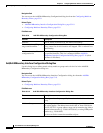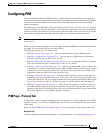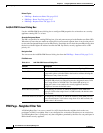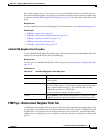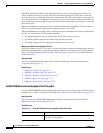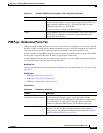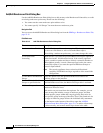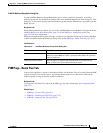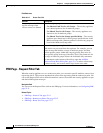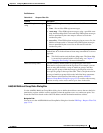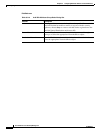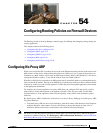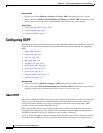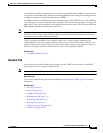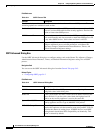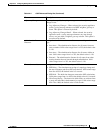
53-18
User Guide for Cisco Security Manager 4.4
OL-28826-01
Chapter 53 Configuring Multicast Policies on Firewall Devices
Configuring PIM
Field Reference
PIM Page - Request Filter Tab
When the security appliance acts as a rendezvous point, you can restrict specific multicast sources from
registering with it. This prevents unauthorized sources from registering with the rendezvous point. You
can use the Request Filter tab to define the multicast sources from which the security appliance accepts
and denies PIM register messages.
Navigation Path
You can access the Request Filter tab from the PIM page. For more information, see Configuring PIM,
page 53-11.
Related Topics
• PIM Page - Protocol Tab, page 53-11
• PIM Page - Rendezvous Points Tab, page 53-15
• PIM Page - Route Tree Tab, page 53-17
Table 53-17 Route Tree Tab
Element Description
If.., specify how the PIM
register messages from
various sources are filtered
Select a tree/groups option:
• Use Shortest Path Tree for All Groups – The security appliance
uses shortest-path tree for all multicast groups.
• Use Shared Tree for All Groups – The security appliance uses
shared tree for all multicast groups.
• Use Shared Tree for the Groups specified below – The security
appliance uses shared tree for those groups specified below in the
Multicast Groups table. Shortest-path tree is used for any group not
listed in the Multicast Groups table.
Multicast Groups table The multicast groups using Shared Tree are listed.
Table entries are processed from the top down. For example, you can
create an entry that includes a range of multicast groups, and then
exclude specific groups within that range by placing deny rules for
those specific groups at the top of the table. That is, the permit rule for
the range of multicast groups follows the individual deny statements.
Use the buttons at the bottom of the table to open the Add/Edit
Multicast Group Rules Dialog Box, page 53-17 to add or edit an entry;
to delete an entry; and to move entries up or down in the table.



